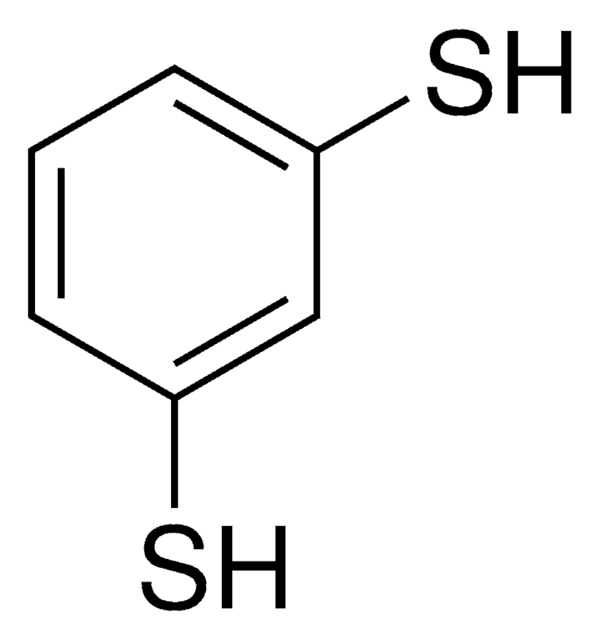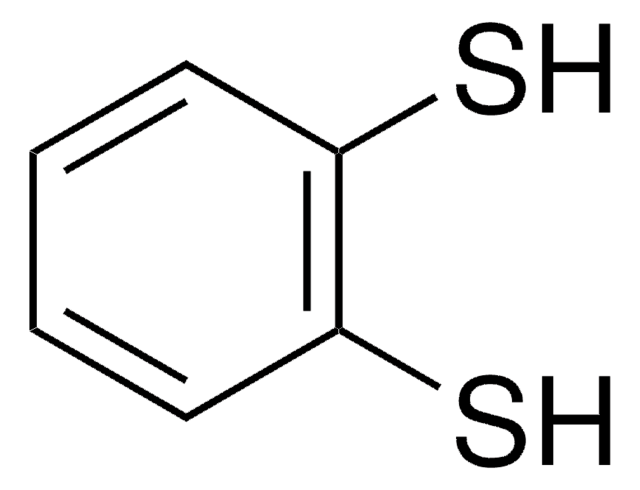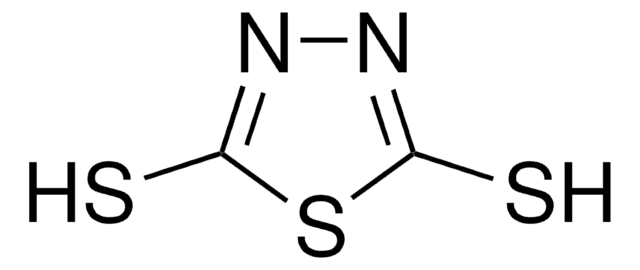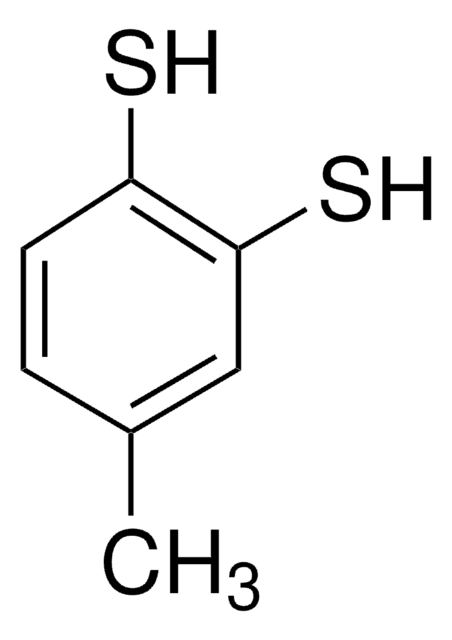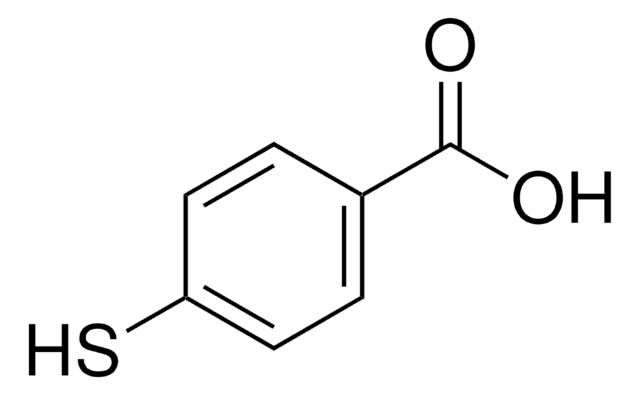763969
Benzene-1,4-dithiol
99% (GC)
Sinonimo/i:
1,4-Benzenedithiol, 1,4-Dimercaptobenzene
Autenticatiper visualizzare i prezzi riservati alla tua organizzazione & contrattuali
About This Item
Formula empirica (notazione di Hill):
C6H6S2
Numero CAS:
Peso molecolare:
142.24
Numero MDL:
Codice UNSPSC:
12352103
ID PubChem:
NACRES:
NA.23
Prodotti consigliati
Livello qualitativo
Saggio
99% (GC)
Stato
powder or crystals
Punto di fusione
92-97 °C
Temperatura di conservazione
2-8°C
Stringa SMILE
Sc1ccc(S)cc1
InChI
1S/C6H6S2/c7-5-1-2-6(8)4-3-5/h1-4,7-8H
WYLQRHZSKIDFEP-UHFFFAOYSA-N
Categorie correlate
Descrizione generale
Benzene-1,4-dithiol (BDT) is a class of aromatic dithiol that can be used to form a self-assembled monolayer (SAM) on a variety of surfaces.
Applicazioni
BDT can be used as a cross-linker that facilitates the development of acrylate based light sensitive epoxidized soya bean oil for 3D printing applications. Gold based nanoconstrictions can be fabricated by functionalizing the surface with BDT, which reduces the overall flicker noise with respect to the unmodified surface.
This molecule can be used in single molecule junctions in electronic devices. It has also shown use in nanomaterial synthesis.
Codice della classe di stoccaggio
11 - Combustible Solids
Classe di pericolosità dell'acqua (WGK)
WGK 3
Punto d’infiammabilità (°F)
Not applicable
Punto d’infiammabilità (°C)
Not applicable
Scegli una delle versioni più recenti:
Possiedi già questo prodotto?
I documenti relativi ai prodotti acquistati recentemente sono disponibili nell’Archivio dei documenti.
I clienti hanno visto anche
Xing; et al.
Journal of the American Chemical Society, 132, 7946-7946 (2011)
Li Lin et al.
ACS nano, 12(7), 6492-6503 (2018-06-21)
Charge transport plays an important role in defining both far-field and near-field optical response of a plasmonic nanostructure with an ultrasmall built-in nanogap. As the gap size of a gold core-shell nanomatryoshka approaches the sub-nanometer length scale, charge transport may
Photoresins based on acrylated epoxidized soybean oil and benzenedithiols for optical 3D printing
Miezinyte G, et al.
Rapid Prototyping Journal (2018)
Conductance of a molecular junction
Reed MA, et al.
Science, 278(5336), 252-254 (1997)
Yung-Ching Chang et al.
Optics express, 25(20), 24767-24779 (2017-10-19)
Near-field and far-field optical properties of plasmonic materials can be tailored by coupling the existing structures. However, fabricating 3D coupled structures in the solution by molecular linkers may suffer from low yield, low stability (particle aggregates), long reaction time, complex
Global Trade Item Number
| SKU | GTIN |
|---|---|
| 763969-1G | 4061832922959 |
Il team dei nostri ricercatori vanta grande esperienza in tutte le aree della ricerca quali Life Science, scienza dei materiali, sintesi chimica, cromatografia, discipline analitiche, ecc..
Contatta l'Assistenza Tecnica.



